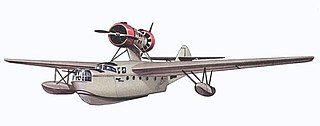
The Kamov Ka-10 was a Soviet single-seat observation helicopter that first flew in 1949.

The Chase Aircraft Company, founded in 1943, was an American aircraft manufacturer, primarily constructing assault gliders and military transport aircraft. Lacking space for expansion, the company was purchased by Henry J. Kaiser in 1951. Plans to produce the C-123 transport for the United States Air Force collapsed amid scandal, and the company closed in 1953. A successor company, Stroukoff Aircraft, continued experimental work for several years before closing in 1959.
Bill Gunston was a British aviation and military author. He flew with Britain's Royal Air Force from 1945 to 1948, and after pilot training became a flying instructor. He spent most of his adult life doing research and writing on aircraft and aviation. He was the author of over 350 books and articles. His work included many books published by Salamander Books.

The Parabellum MG 14 was a 7.92 mm caliber World War I machine gun built by Deutsche Waffen und Munitionsfabriken. It was a redesign of the Maschinengewehr 08 machine gun system intended for use on aircraft and zeppelins. Like the earlier Vickers machine gun, it used a toggle action that broke upwards rather than downwards, the opposite way to the MG 08, making for a much more compact receiver. The fusee spring was replaced with an internal spring design, the breech block was completely different and the spent cartridges dropped out the bottom of the receiver, rather than being ejected forward through a hole under the breech from the receiver. There appears to be no action or receiver parts interchangeable with the MG 08. The MG 08's belt-style ammunition feed was enclosed in a drum, the recoil casing was lightened and the cooling jacket was modified for air- instead of water-cooling. The rate of fire was 700 rounds/minute. The belt was reduced to 30 mm in width.
inž. P. Beneš a inž. J. Mráz, továrna na letadla was a Czechoslovak aircraft manufacturer of the 1930s.

The Chyetverikov ARK-3 was a multi-role flying boat designed for Arctic operations that was built in the Soviet Union from 1933. It featured a conventional flying boat hull, with high cantilever wings equipped with floats at mid-span. The two piston engines were mounted in tractor-pusher fashion on a pylon above the fuselage.
The Tupolev MTB-1 was a patrol flying boat built in the Soviet Union in the mid-1930s. It was a refined version of the unsuccessful Chyetverikov MDR-3. The revised design retained the MDR-3's hull, but added a newly designed, full-cantilever wing, a new tail, and a new engine installation featuring two tractor and one pusher unit. Trials began in March 1934 but the prototype was destroyed during one takeoff.
Lawrance Aero Engine Company was an American aircraft engine manufacturer. Founded by engine pioneer Charles Lawrance, it designed one of the first successful air-cooled radial engines. It existed for only 5 years, being acquired by Wright Aeronautical, a much larger company better able to mass-produce Lawrance's radial engines.
The MDR-3 (a.k.a.11) was a long-range flying boat designed and built in the USSR from 1931.
The BOK-2 was an aerodynamic research aircraft designed by S. S. Krichyevskii and built in the USSR in 1934.
The Gotha G.VI was an experimental bomber aircraft designed and built in Germany during World War I.

The Bolkhovitinov DB-A was a heavy bomber aircraft designed and built in the USSR from 1934.
The Borovkov-Florov D was an experimental fighter aircraft designed in the USSR from 1940.

The Krunichev T-411 Aist is a Russian light utility monoplane designed by the Russian company Aeroprogress and placed into production by the Khrunichev State Research and Production Space Center. A version is marketed in the United States as the Aeroprogress T-411 Wolverine powered by a Continental TSIO-550-B.
The SITAR GY-90 Mowgli was a light aircraft designed in France in the late 1960s and marketed for homebuilding. Designer Yves Gardan intended it to be a smaller and simpler version of his Bagheera, a conventional low-wing, cantilever monoplane with fixed tricycle undercarriage and a fully enclosed cabin. However, although the Bagheera had seating for up to four people in 2+2 configuration, the Mowgli had no rear seat and could seat only two people, with space behind the seats for luggage. Like the Bagheera, construction was of metal throughout. The Mowgli was designed to use either a 67-kW (90-hp) or 75-kW (100-hp) Continental flat-4 engine.
This page is based on this
Wikipedia article Text is available under the
CC BY-SA 4.0 license; additional terms may apply.
Images, videos and audio are available under their respective licenses.





